How Does Cavity Filling Work on Front Teeth? A Simple Guide
 Cavities are one of the most common conditions in the world. According to the CDC, nearly everyone will have a cavity at some point in their life (more than 9 out of 10 adults!)
Cavities are one of the most common conditions in the world. According to the CDC, nearly everyone will have a cavity at some point in their life (more than 9 out of 10 adults!)
While it might seem like our front teeth are less likely to get cavities — because they’re easier to clean and not used for heavy chewing — they can still develop decay for different reasons.
In this article, we’ll look at why front teeth can get cavities, how these cavities can progress, and when a filling is needed.
In this article:
1. How Can Front Teeth Get Cavities?
2. Where Does Decay Most Likely Form on Front Teeth?
3. How Can Cavities Progress on Front Teeth?
4. Filling Front Teeth with Composite
5. Are There Alternatives to Composite?
6. Other Uses of Composite for Front Teeth
7. How Long Can a Composite Filling Last on Front Teeth?
8. Alternatives to Dental Fillings for Front Teeth
How Can Front Teeth Get Cavities?
Whether it’s on a front tooth or a back tooth, a cavity develops the same way.It’s true that back teeth (like molars) tend to get cavities more often than front teeth. That’s because they have pits and grooves that easily trap plaque and food, making them more prone to decay.
Front teeth are a bit more protected, but they can still develop cavities, especially in the areas between the teeth where plaque can hide.
How tooth decay starts and progresses is actually a complex process. It’s not just about skipping brushing or eating too much sugar — it’s the result of several factors working together.
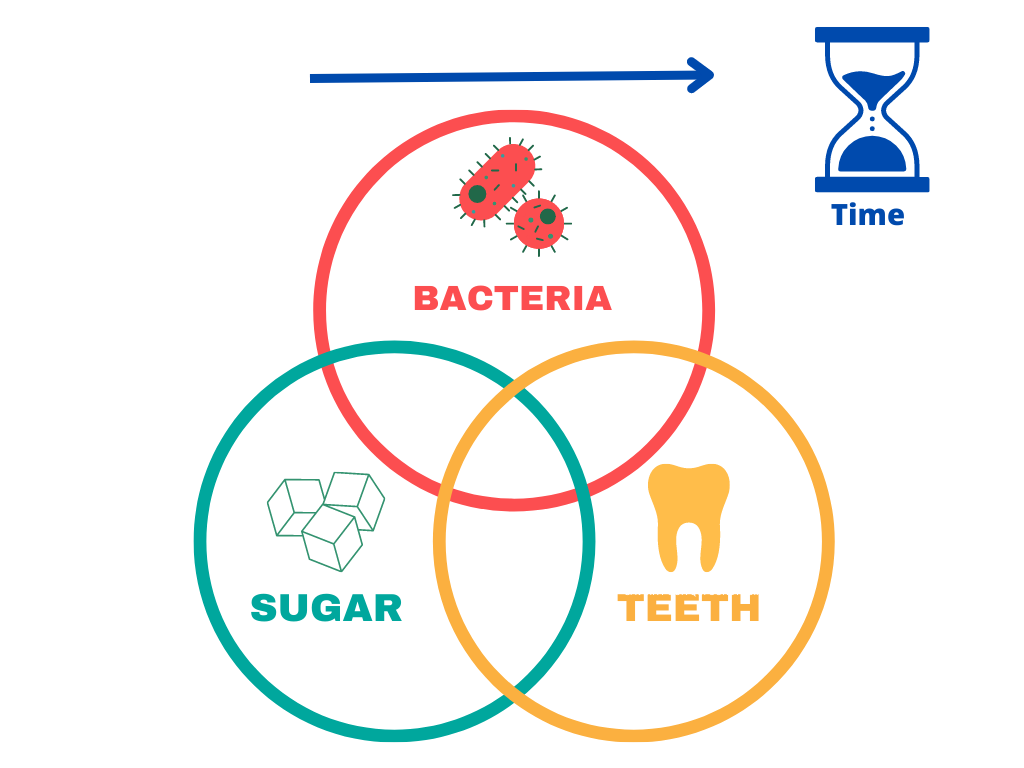
The main players are bacteria, sugar, and your teeth:
- Bacteria: There are countless bacteria in your mouth. Not all are bad, but some produce acids that break down tooth minerals. If the harmful bacteria outnumber the friendly ones, your risk of cavities goes up.
- Sugar: Cavity-causing bacteria feed on sugar. So, if your diet is high in sugar, you’re constantly giving these bacteria fuel to produce acid. Over time, this acid weakens your enamel and leads to cavities.
- Tooth protection factors: Thankfully, your teeth have some natural defenses. Good oral hygiene, a diet rich in minerals, healthy saliva flow (dry mouth is a major cavity risk), overall good health, and strong enamel all help protect your teeth. But if these protective factors are weak — or if the harmful factors win out — cavities can develop.
Where Does Decay Most Likely Form on Front Teeth?
When cavities develop on the front teeth, they’re most likely to appear between the teeth and along the gum line. These spots naturally attract more plaque and bacteria — and they’re easy to miss during brushing and flossing.The risk is even higher if your front teeth are crowded or if you wear braces. Crowding and braces create extra places for plaque to hide and make cleaning more challenging, giving bacteria more opportunity to overgrow.
How Can Cavities Progress on Front Teeth?
If left untreated, a cavity will never heal on its own — it will keep growing and destroy more of your tooth’s structure over time.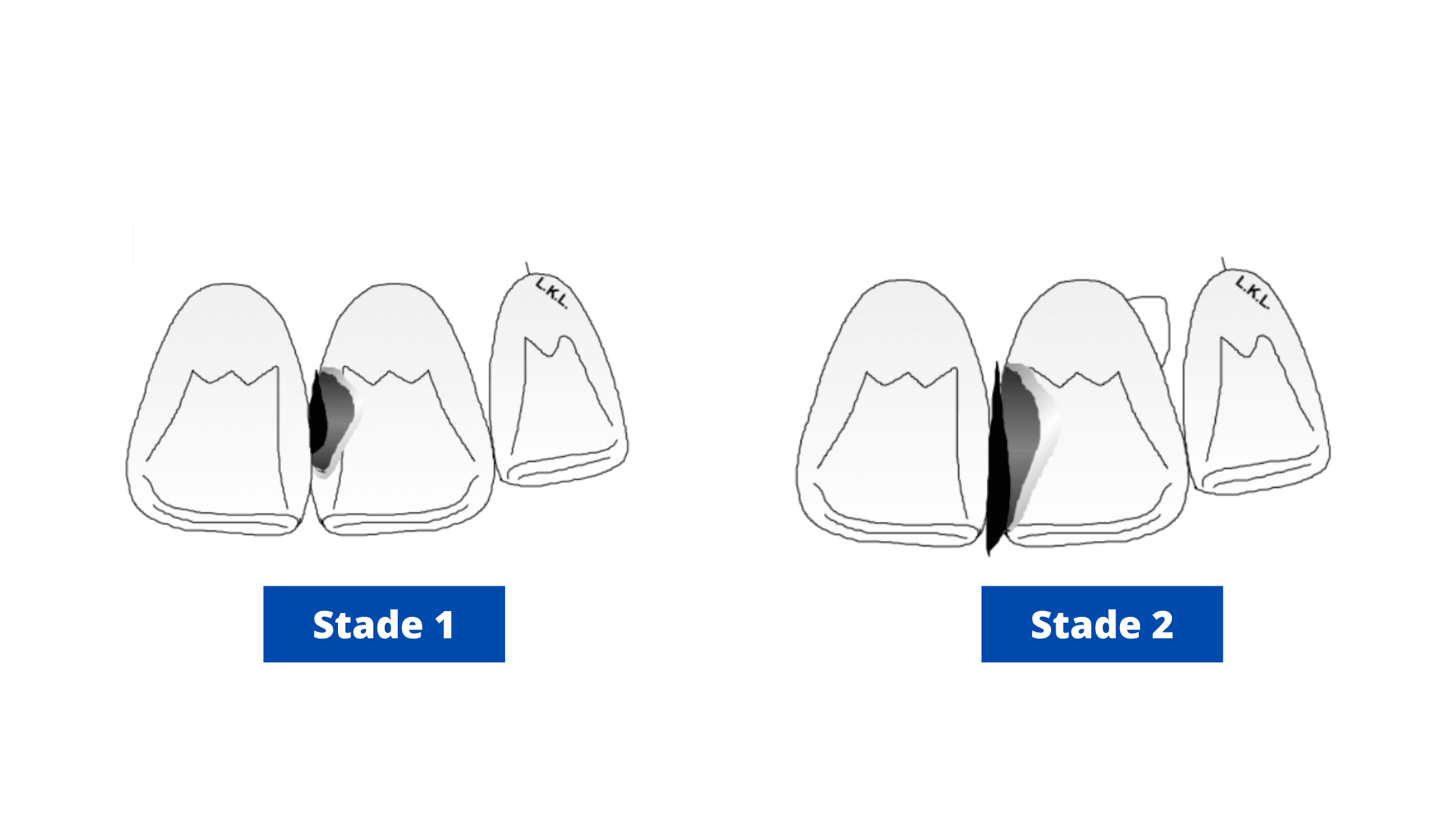
The only way to stop it is for your dentist to remove the decayed tissue and fill the area.
But just filling the cavity isn’t enough. It’s just as important to tackle the factors that caused it in the first place. This could mean treating dry mouth, cutting back on sugar, and limiting frequent snacking.
Here’s how a cavity can progress if it’s not treated:
- First stage: The cavity starts as a small spot on the surface of your tooth. It may look white or brown, but it doesn’t hurt yet. That’s because the decay is only in the enamel — the hard, outer layer of your tooth.
- Second stage: As the cavity gets deeper, it reaches the dentin — the softer layer beneath the enamel. At this point, you might notice a darker hole and feel some sensitivity to hot or cold food and drinks. This happens because the dentin can transmit temperature and pressure to the nerves inside the tooth.
- Third stage: If the cavity keeps progressing, it can reach the pulp — the innermost part of the tooth that contains nerves and blood vessels. This can cause severe pain and inflammation because the pulp is very sensitive and easily infected by bacteria. Once the pulp is infected, it can lead to complications like dental abscesses.
Filling Front Teeth with Composite
Unlike molars, your front teeth are visible when you talk or smile. So when it comes to filling a cavity here, the main goal is to restore the tooth’s natural look as perfectly as possible.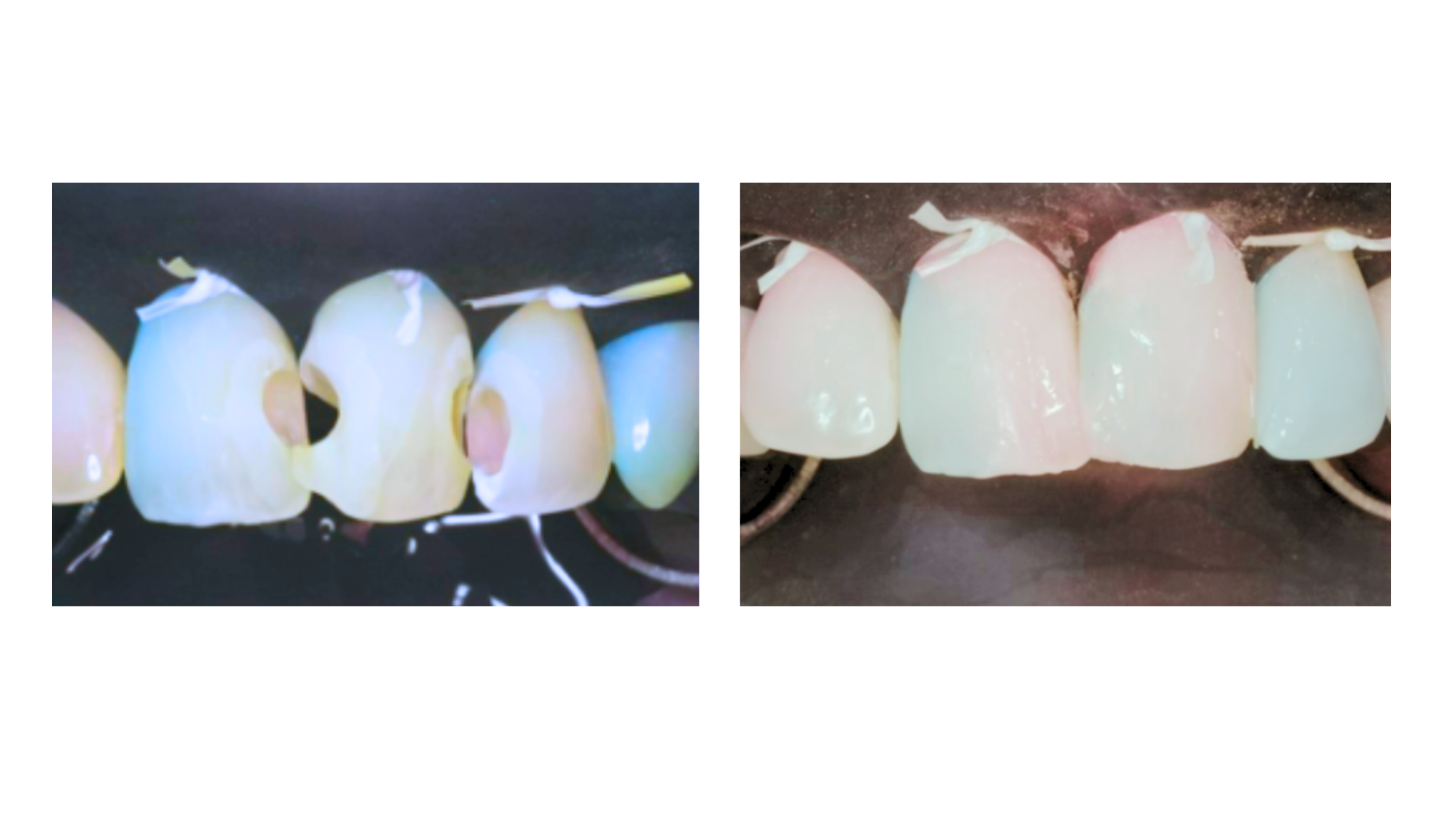
By the time the filling is done, your tooth should look very natural, matching the shape, color, and position of your other teeth.
One of the best ways to achieve this is with a composite filling. Composite is a white, tooth-colored material specially designed to restore the natural appearance of teeth. It bonds directly to the tooth and can be shaped and polished to match the surrounding teeth perfectly.
Here are the typical steps for getting a composite filling on a front tooth:
- The dentist will numb the area around the tooth with a local anesthetic.
- The dentist will remove the decayed part of the tooth with a drill and clean the cavity.
- The dentist will apply a gel to etch the surface of the tooth and make it rougher. This helps the composite material bond better with the tooth.
- The dentist will rinse and dry the tooth, then apply a bonding agent (a type of glue) to the tooth.
- The dentist will place the composite material in layers on the tooth, shaping it to match the natural contours of the tooth.
- The dentist will use a special light to harden (cure) each layer of composite material.
- The dentist will trim and polish the final restoration to make it smooth and shiny.
Are There Alternatives to Composite?
There are also other filling materials, such as amalgam and glass ionomer cement (GIC).Amalgam is silver in color, so it is not a cosmetic solution for front teeth. On the other hand, it is harder and more resistant, therefore, more suitable for back teeth.
GIC, like composite, has a color close to the teeth. But it is more fragile and wears out quickly. We often use it as a temporary solution when the patient has poor oral hygiene or a high risk of cavities (due to its fluoride-release properties).
Other Uses of Composite for Front Teeth
Composite isn’t just for filling cavities — it can also be used to improve the appearance and function of your front teeth in other ways. Here are a few common uses:- Repair fractured teeth: If you have a chip or crack in a front tooth, composite can restore its shape and strength.
- Fix worn-down teeth: If your front teeth have been worn down by grinding, clenching, or acid erosion, composite can rebuild the lost enamel and help protect the teeth from further damage.
- Close gaps between teeth: If you have small gaps between your front teeth that bother you, composite bonding can fill them in and create a more even, attractive smile.
- Reshape front teeth: If your front teeth are crooked, uneven, or misshapen, composite can be used to adjust their shape and size for a more balanced look.
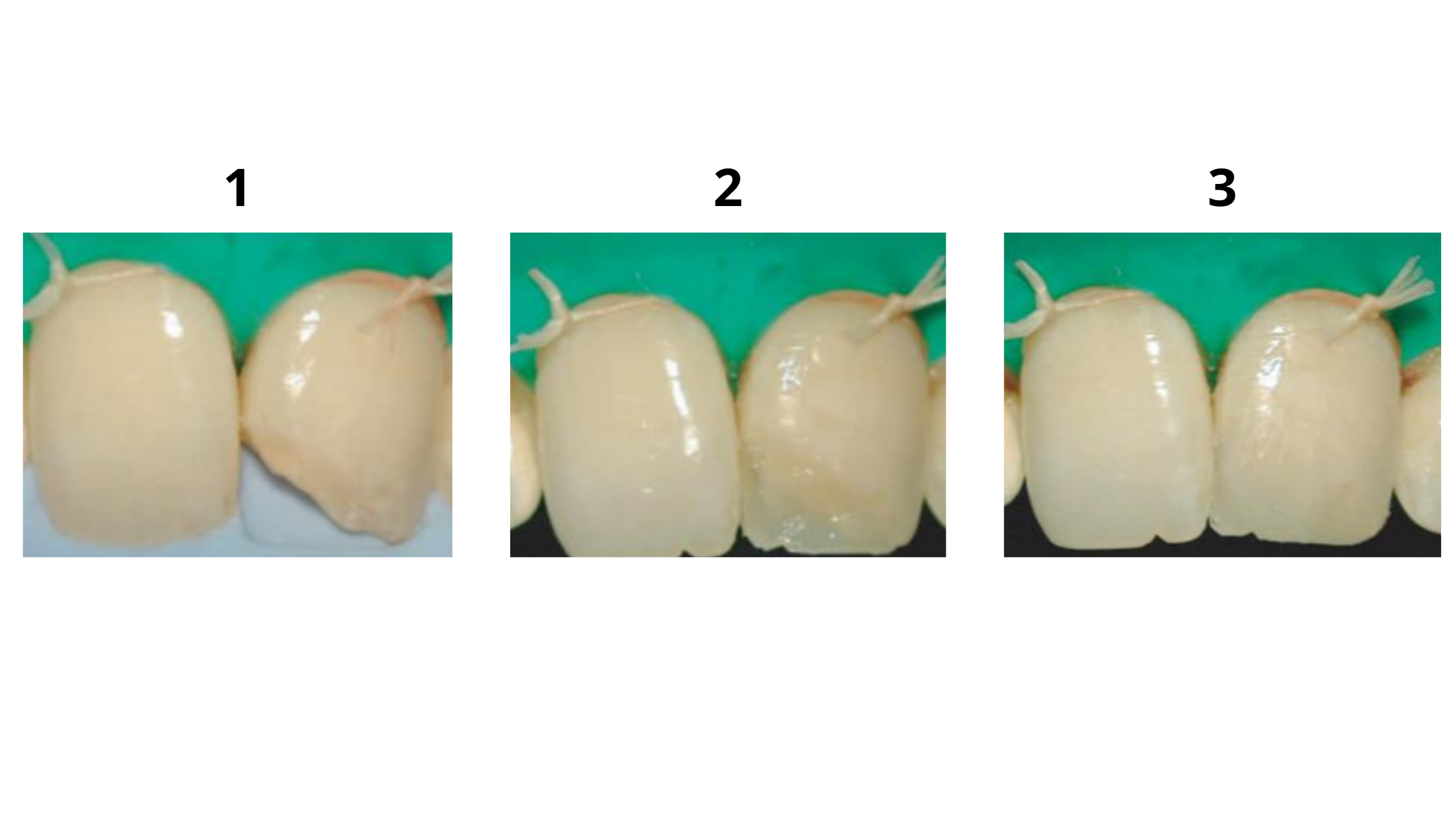
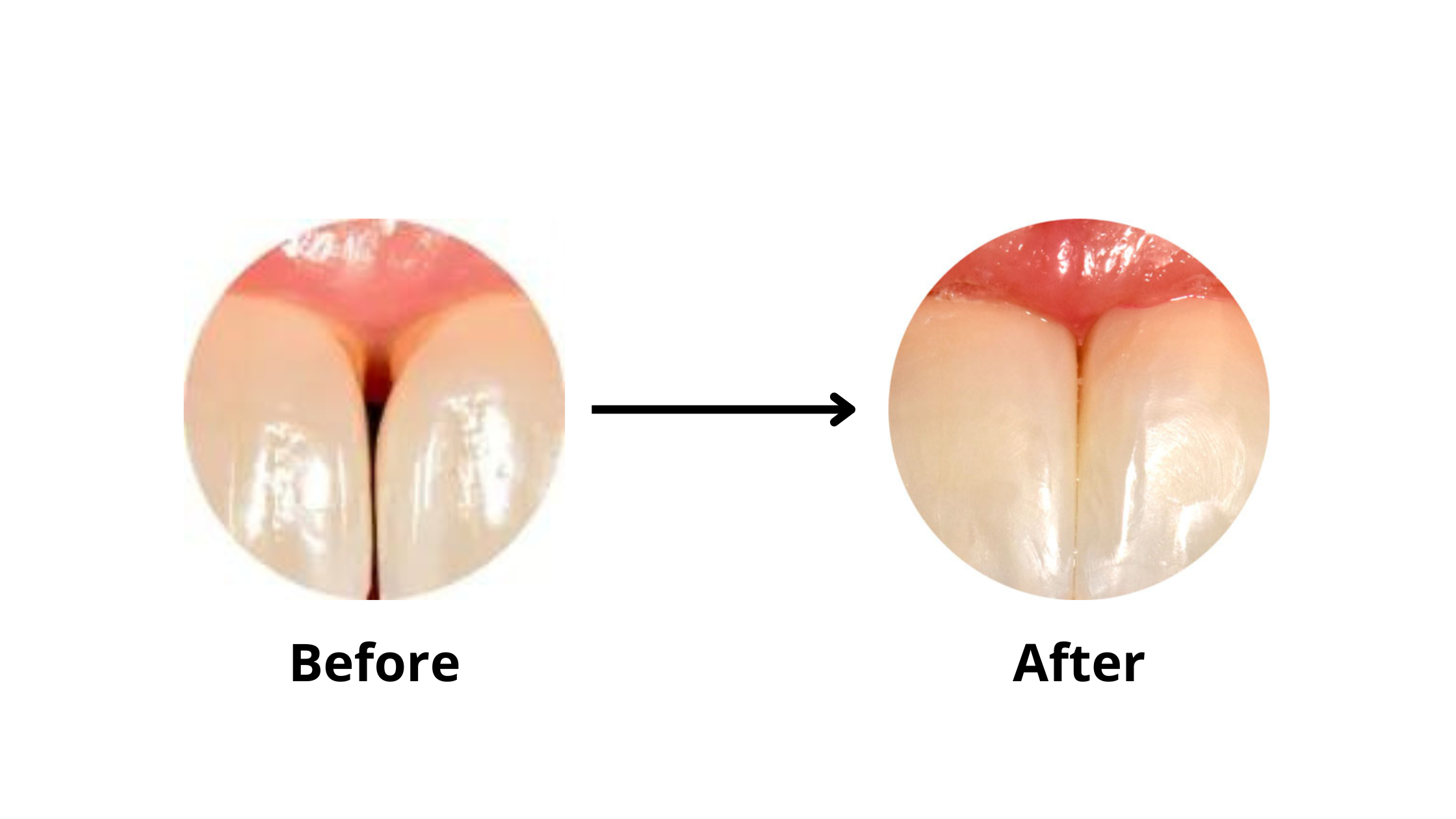
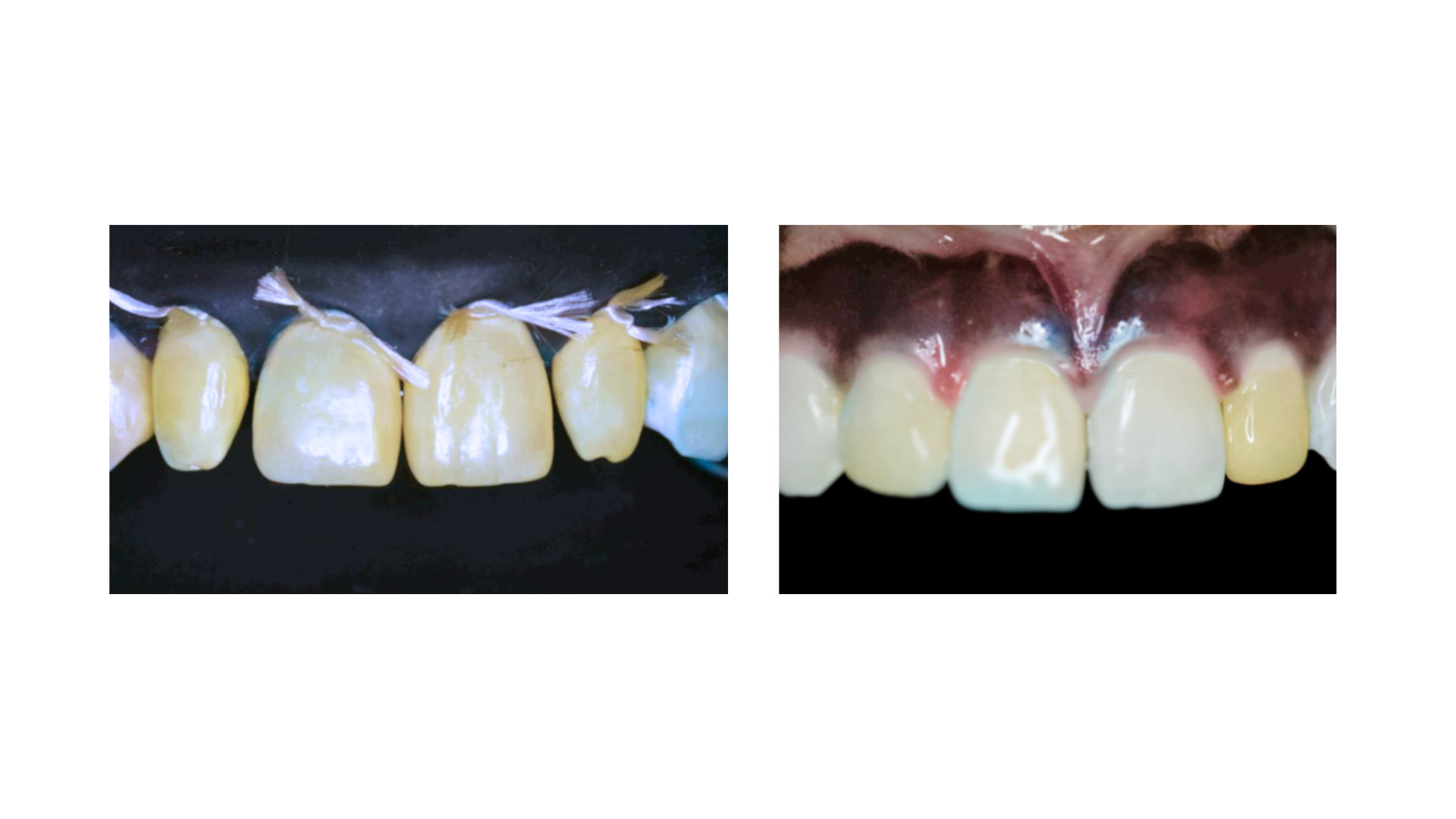
How Long Can a Composite Filling Last on Front Teeth?
One of the most common questions patients ask is: How long will my filling last on my front teeth? The answer depends on several factors, including the type of filling, the size and location of the cavity, the quality of the bonding work, and, of course, your diet and oral hygiene habits.Composite fillings on front teeth can last up to 10 years — sometimes even longer with good care. But they do require proper maintenance to keep them from wearing down or becoming stained over time.
Here are some tips to help your composite filling last as long as possible:
- Avoid biting or chewing on hard foods or objects, such as ice, nuts, pens, or fingernails, that can crack or chip your filling.
- Limit drinking or eating foods and beverages that can stain your filling, such as coffee, tea, wine, berries, or curry. If you do consume them, rinse your mouth with water right after or brush your teeth.
- Brush your teeth twice a day with a soft-bristled toothbrush and fluoride toothpaste to remove plaque and bacteria that can damage your filling and your tooth enamel.
- Floss your teeth once a day, before bed, to clean between your teeth and prevent plaque buildup and gum disease.
- Visit your dentist regularly for checkups and professional cleanings to monitor the condition of your filling and detect any signs of decay or damage early.
- Follow your dentist's instructions on how to care for your filling after the procedure. For example, you may need to avoid eating or drinking anything hot or cold for a few hours until the anesthetic wears off and the filling sets completely.
Alternatives to Dental Fillings for Front Teeth
A dental filling is a common and effective way to treat cavities on front teeth — but it’s not the only option. Depending on your situation, there may be alternatives worth considering:Remineralizing treatment
Not all tooth decay needs a filling. If decay is caught at the “white spot” stage, it can be reversed. Remineralization focuses on restoring the minerals your tooth has lost. This can be achieved by adjusting your diet, improving your oral hygiene, and using remineralizing products like fluoride toothpaste, gels, or mouthwashes, or calcium-phosphorus-based products (like hydroxyapatite, Novamin, or Recaldent).
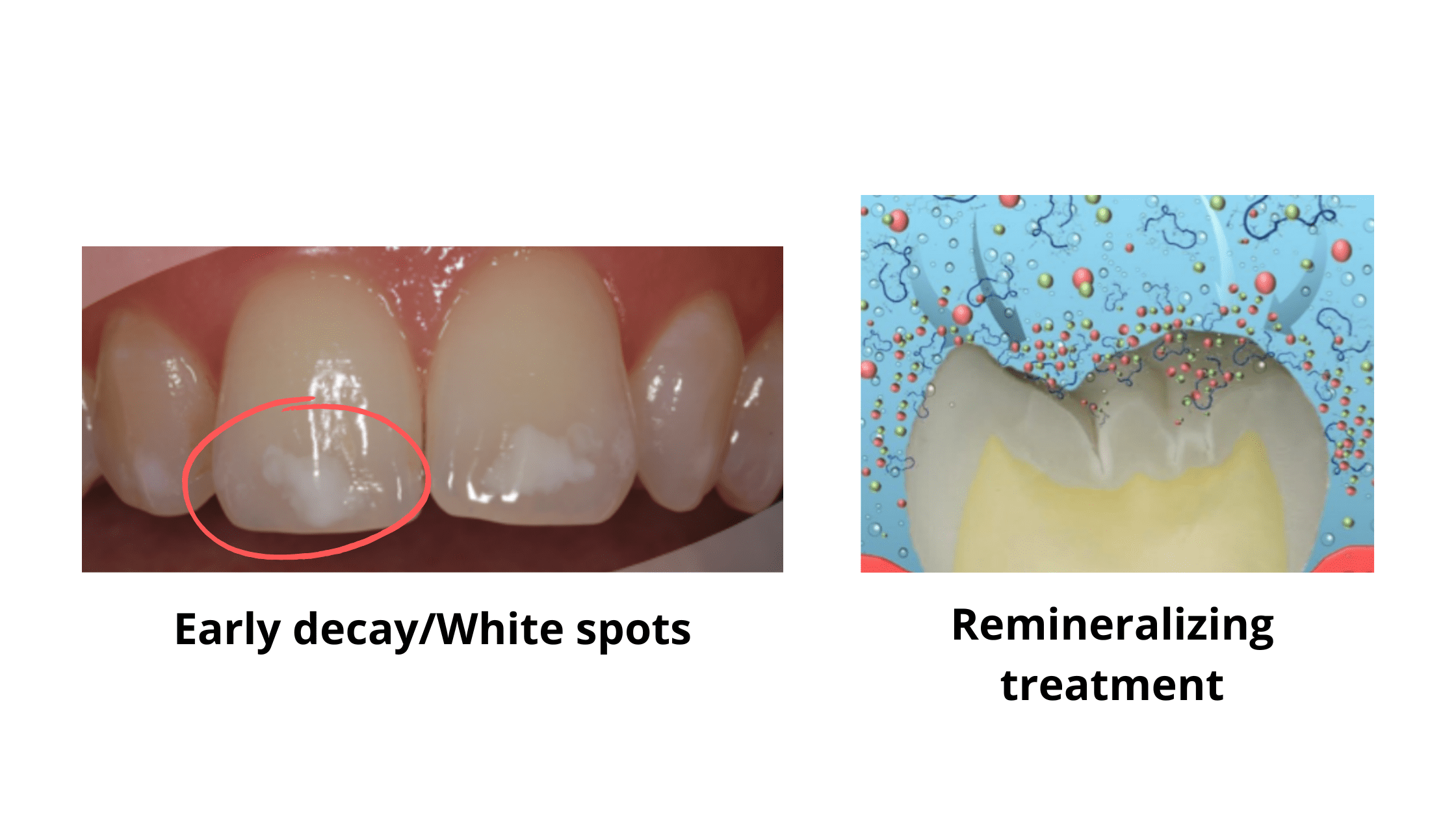
Icon Resin Infiltration
This is a minimally invasive technique that uses a fluid resin material to fill and strengthen the enamel without any drilling or anesthesia. It’s quick and painless, but it can only be used to treat very early decay that is still limited to the outer enamel layer.
Porcelain Veneers
Veneers are thin shells of a highly cosmetic material called porcelain bonded to the front surfaces of your teeth. They can improve the shape, size, color, and alignment of front teeth and cover issues like stains, chips, cracks, gaps, or crooked teeth.
Crowns
A crown is a cap that covers the entire visible part of a tooth to protect it and restore its function and appearance. A crown may be needed if the tooth is severely decayed, broken, or weakened by a large filling or root canal treatment.
- Dental caries prevalence in individual tooth in primary and permanent dentition among 6-12-year-old school children in Shimla, Himachal Pradesh https://www.ijhas.in/article.asp?issn=2278-344X;year=2014;volume=3
- Dental Caries in Primary Teeth https://www.cdc.gov/oralhealth/publications/OHSR-2019-summary